The Spanish lavender is not your everyday lavender; it’s a fiesta of fragrance and a carnival of colors, ready to turn your garden into a Mediterranean paradise.
What makes it special is the fact that it’s also a versatile herb with a treasure trove of uses, from spicing up your culinary creations to soothing your senses with its therapeutic properties. Originating from the sunny landscapes of the Mediterranean, it brings a unique flair, differentiating itself with its vibrant bracts and compact foliage from its lavender siblings.
In this guide, I will help you explore its distinctive traits, talk about its uses, and learn the secrets to growing and caring for Spanish lavender.
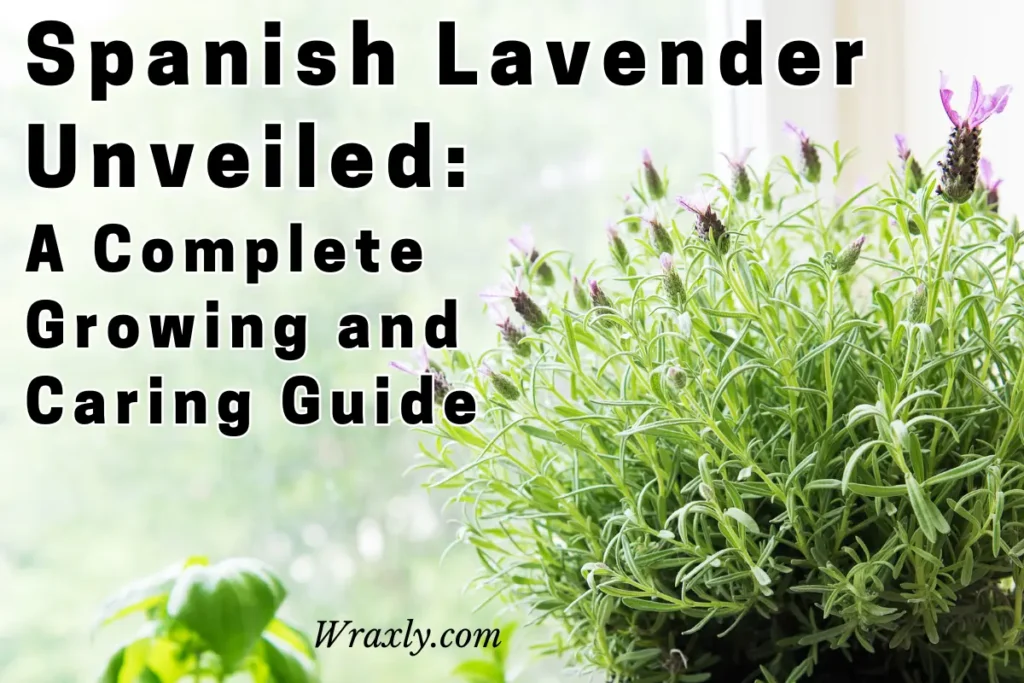
Spanish Lavender: At a Glance
Spanish Lavender, or Lavandula stoechas, is a unique variant of the well-known lavender plant, distinguished by its vibrant colors and distinctive fragrance. It’s a plant that not only adds aesthetic value to gardens but also brings a rich history and a plethora of uses, from culinary to medicinal.
Origin and Characteristics
Spanish Lavender comes from the Mediterranean regions, thriving in the sunny and rocky landscapes of Southern Europe. It’s a plant that has adapted to harsh, dry climates, making it a resilient and hardy choice for gardens.
Physically, Spanish Lavender is recognized by its dense, gray-green foliage and the distinctive pineapple-shaped flower heads that sit atop its slender stems. The flowers are usually a vibrant purple, crowned with colorful bracts that are often mistaken for petals. Typically, the plant reaches a height of about 30 to 100 cm, making it a compact addition to any garden space.
The fragrance of Spanish Lavender is robust and aromatic, with a camphoraceous scent that distinguishes it from the sweeter fragrances of other lavender varieties. The oil extracted from Spanish Lavender is prized for its antiseptic and anti-inflammatory properties, making it a valuable ingredient in cosmetics and therapeutic products.
Varieties of Spanish Lavender
Here are the different varieties of Spanish lavender:
Otto Quast
This variety is a popular choice among gardeners, known for its vibrant purple flowers and robust, aromatic scent. It’s a resilient and hardy plant, thriving in areas with full sun exposure and well-drained soil. The ‘Otto Quast’ is particularly loved for its long blooming season, providing gardens with a splash of color from late spring to early fall.
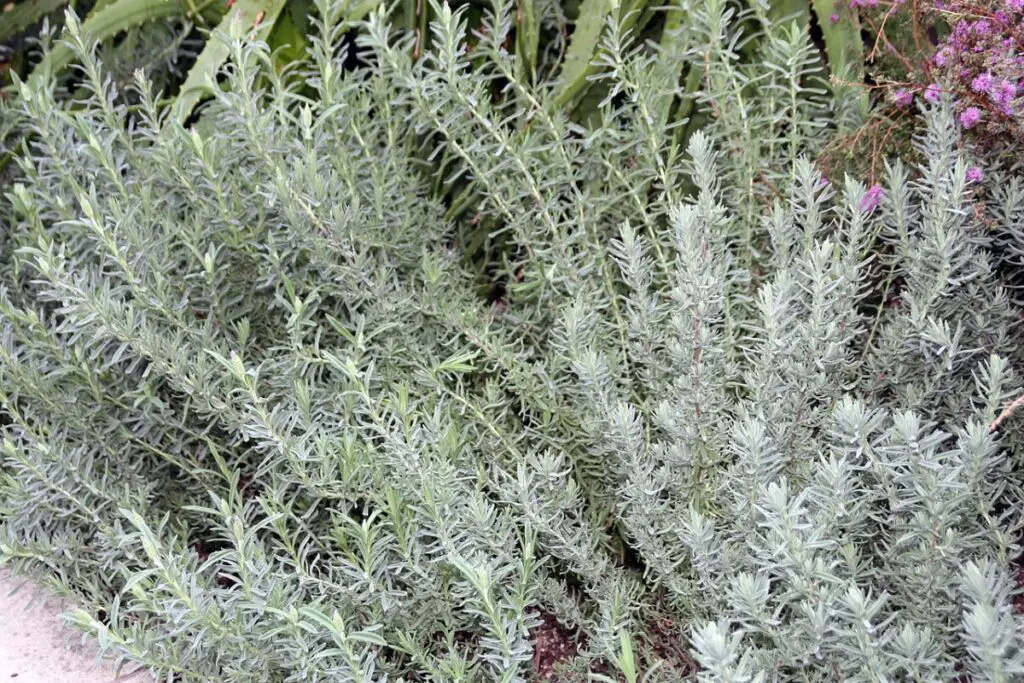
Anouk
This one is a personal favorite, coming with dark purple flowers and a compact, bushy growth habit. It’s a variety that is well-suited to small spaces and container gardening, making it a versatile choice for gardeners with limited space. It is also known for its longer-lasting blooms and its ability to attract pollinators, adding ecological value to the garden.
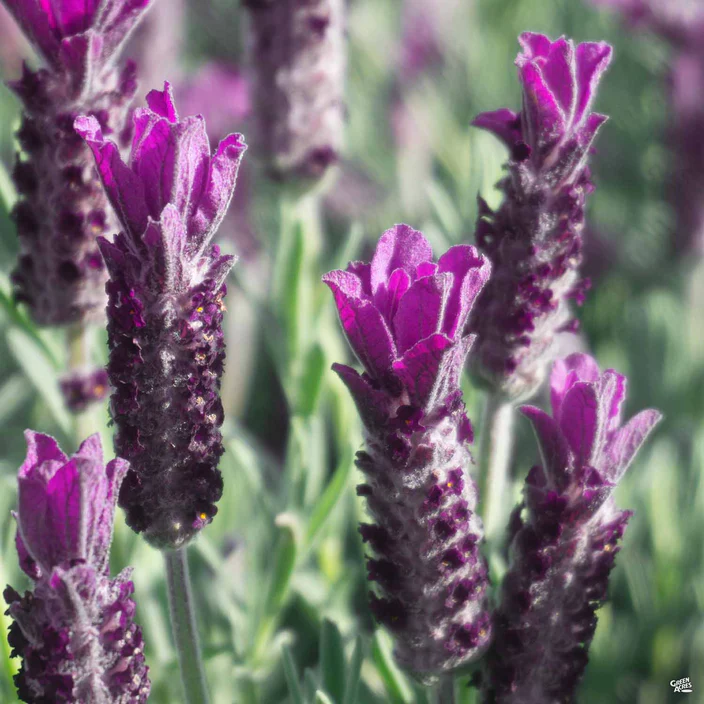
Bandera Purple
The Bandera Purple stands out with its compact size and deep purple blooms, making it an ideal choice for borders and container gardens. It’s a variety that is easy to care for, requiring minimal maintenance and offering high resistance to pests and diseases.
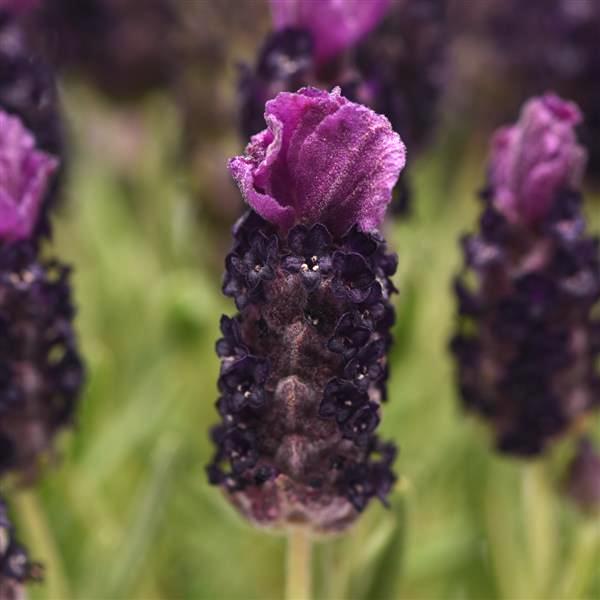
Other Notable Varieties
Beyond these, there are numerous other varieties of Spanish Lavender, each bringing its unique charm and characteristics to the table. For instance, the ‘Kew Red’ offers a splash of soft pink to the garden, while the ‘Silver Anouk’ stands out with its silvery foliage and dark purple flowers. The ‘Fathead’ is recognized for its large, dense flower heads, and the ‘Ballerina’ enchants with its delicate, frilly bracts.
Planting Spanish Lavender
If you want this Mediterranean beauty to thrive in your garden, it’s crucial to provide it with the right environment, plant it correctly, and give it the care it needs initially. Here’s a detailed guide to help you plant your Spanish Lavender successfully.
Choosing the Right Location
Spanish Lavender is a sun-loving plant, craving those golden rays for at least 6 to 8 hours a day. A sunny spot will ensure prolific blooming and a robust aromatic presence. If you’re in a region with intense summer heat, some afternoon shade would be beneficial.
Soil Preference
This lavender variety prefers well-drained, slightly alkaline soil with a pH between 6.7 and 7.3. It’s quite tolerant of low-fertility soils and thrives in rocky, sandy substrates, reminiscent of its native Mediterranean habitats. Avoid clayey, waterlogged soils as they can lead to root rot.
Ideal Climate and Temperature
Spanish Lavender flourishes in a Mediterranean climate—mild, wet winters and hot, dry summers. It’s hardy to USDA zones 7-9 and can tolerate temperatures down to 10°F (-12°C) once grown fully.
Pro tip: का उपयोग करो soil pH testing kit to ensure your soil meets the plant’s needs. If your soil is too acidic, consider adding lime to raise the pH.
रोपण प्रक्रिया
Spring is the ideal time to plant Spanish Lavender, after the risk of frost has passed. Planting in the spring allows the lavender to establish its root system before the winter. While Spanish Lavender can be grown from seeds, it’s a lengthy and less reliable process. Transplanting young plants or mature clumps is more effective. When transplanting, ensure the root ball is intact, and the soil is moist.
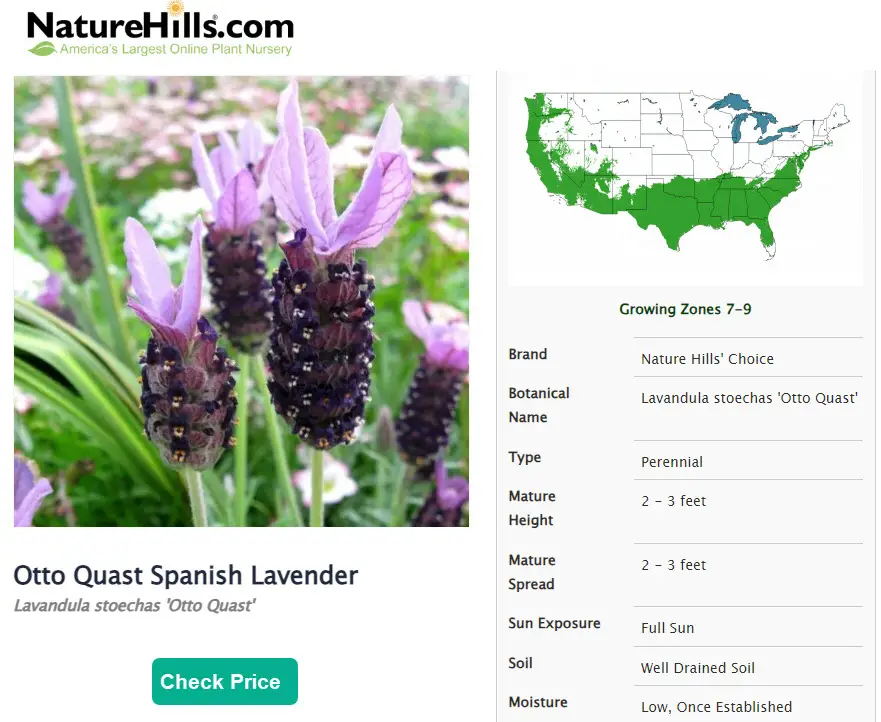
Space the plants approximately 18 to 24 inches apart to allow for proper air circulation and prevent overcrowding. Arrange them in a way that they receive ample sunlight, preferably in rows or as border plants. When transplanting, water the plant well a few hours before moving it. This ensures the soil sticks to the roots, reducing transplant shock.
Initial Care
- Spanish Lavender is drought-tolerant once established, but during the initial weeks, it requires regular watering. Keep the soil consistently moist but not waterlogged. Once established, reduce the watering frequency, allowing the soil to dry out between waterings.
- Spanish Lavender doesn’t demand high fertility. However, a light application of a balanced, slow-release fertilizer at planting time can support initial growth. Avoid high-nitrogen fertilizers as they can lead to leggy growth and reduced fragrance.
- Mulching is crucial to conserve soil moisture, suppress weeds, and regulate soil temperature. Use organic mulch like straw or bark, but avoid piling it against the stem to prevent rot.
इसमें आपकी भी रुचि हो सकती है… शैम्पू जिंजर लिली के रोपण और देखभाल में महारत हासिल करना
चल रही देखभाल और रखरखाव
Be sure not to over-water your plant as this can lead to root rot due to its preference for well-drained soils. Once established, water sparingly, only when the soil is dry to the touch, approximately every 2-3 weeks, depending on the climate.
Fertilization needs are minimal. A balanced, slow-release fertilizer applied in the spring should suffice for the entire growing season. Avoid high-nitrogen fertilizers, as they promote leafy growth at the expense of blooms and fragrance.
Pruning and Trimming
Pruning is essential for maintaining the plant’s shape, encouraging airflow, and promoting vigorous, bushy growth. The best time to prune is after the first bloom in early summer. Cut back approximately one-third of the plant’s height, focusing on removing spent flower stalks and shaping the plant.
कीट एवं रोग प्रबंधन
Spanish Lavender is relatively pest-resistant, but मकड़ी की कुटकी and aphids can occasionally infest the plants. Organic solutions like नीम का तेल or insecticidal soaps are effective remedies. For fungal diseases like root rot, ensuring proper drainage and avoiding overwatering are the best preventive measures.
आगे पढ़ने के लिए
- बीजों से लैवेंडर उगाना
- क्या लैवेंडर हर साल वापस उगता है?
- रूसी ऋषि बनाम लैवेंडर
- लैवेंडर को कितनी बार पानी दें?
- लैवेंडर साथी पौधे
Harvesting and Other Uses
Harvesting is best done in the morning when the essential oils are most concentrated. Cut the stems when the flowers are just starting to open, using sharp scissors or pruners. After harvesting, bundle the stems and hang them upside down in a dry, dark place to preserve color and fragrance.
Spanish Lavender is a versatile herb with numerous applications. Its flowers and leaves can be used in culinary dishes, adding a unique flavor to sweets and baked goods. Medicinally, it’s valued for its antiseptic and anti-inflammatory properties, making it a beneficial addition to natural remedies and skincare products.
Once dried, you can store lavender in airtight containers, away from light and heat, to preserve its color and fragrance. Properly stored lavender can retain its properties for years.
Final Thoughts on Spanish Lavender
Spanish Lavender is a gift to the senses, a plant that combines visual beauty, aromatic pleasure, and versatile utility. By employing the right tips and hacks, you can enhance its flower production, propagate it efficiently, and incorporate it creatively into your landscape.
Whether you desire a garden that is a visual spectacle, a fragrant paradise, or a culinary herb haven, Spanish Lavender can help you get closer your gardening dreams. So, let’s embrace the aromatic charm of Spanish Lavender and let it sprinkle its Mediterranean magic in our gardens!

डेरेल को बागवानी का शौक है जो उन्हें अपने पिता से विरासत में मिला है। जाना यहाँ बागवानी के प्रति उनके प्रेम में उनके पिता के प्रभाव के बारे में अधिक पढ़ने के लिए। यदि आप डेरेल को एक त्वरित संदेश भेजना चाहते हैं, तो जाएँ उसका संपर्क पृष्ठ यहाँ.

![इनडोर पौधों को पानी कैसे दें [पौधों की देखभाल 101]](https://wraxly.com/wp-content/uploads/2021/03/How-to-Water-Indoor-Plants-Plant-Care-101-1200-1024x576.webp)

![कटिंग से पौधे उगाना [एक साधारण गाइड]](https://wraxly.com/wp-content/uploads/2021/03/Growing-Plants-from-Cuttings-A-Simple-Guide-1200-1024x576.webp)
